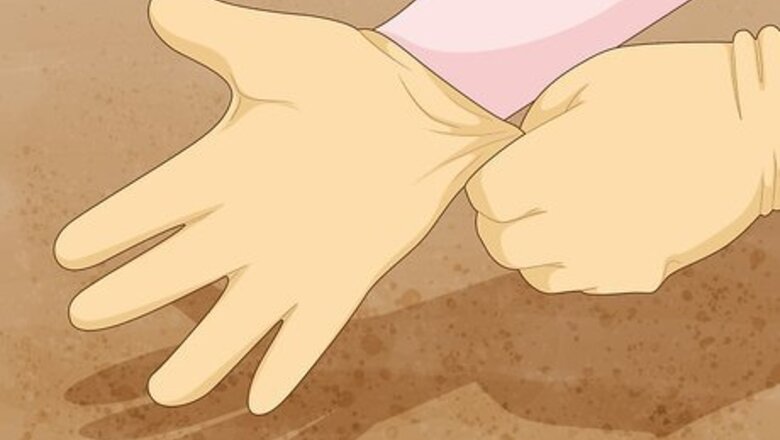
views
Digging up Agave Pups in a Pot or the Ground
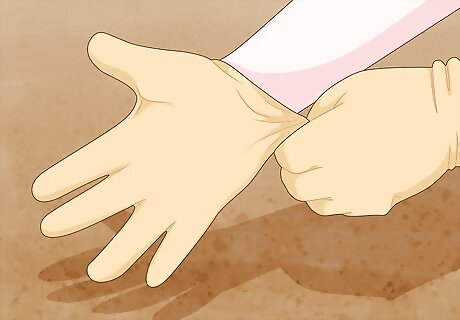
Put on a thick pair of gardening gloves. Many common varieties of agave have sharp leaves and needle-like spines growing out of the tips. To avoid painful cuts and pricks, slip on a pair of gardening gloves before touching the plant. Choose a pair of thick gloves, like ones made out of leather, as they usually offer more protection. Use a pair of gardening shears to snip off any sharp spines growing out of the tip of the leaves.
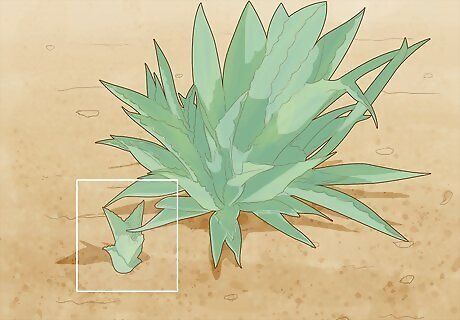
Look for agave pups growing around the base of the mother plant. Agave pups, or offshoots, look like miniature versions of the mother agave plant. The spikey plants usually pop out of the soil around the mother plant, though they can sometimes appear right under the plant’s leaves. Some pups grow on the agave’s stem or stalk. Look for pups on the stem near the ground, or further up the plant. Lift the plant’s leaves carefully to find any small pups hidden from sight. Remove pups when they’re about 4 inches (10 cm) tall and wide, as they usually have well-developed roots. Smaller pups might not have roots and may take longer to grow. Small pups are typically easier to remove than big pups, as they have fewer roots. So, check your agave plant for pups regularly.
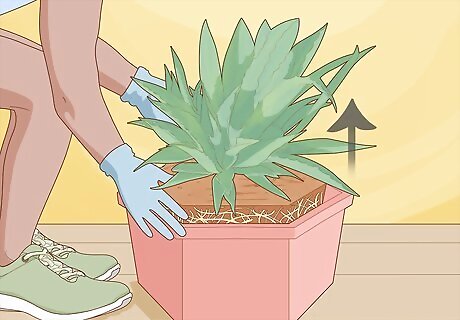
Remove the agave plant from its pot, if it is in one. Gently tap or squeeze the sides of the pot to loosen the soil and the agave’s roots. Then, tip the pot onto its side. Grab the base of the agave and carefully pull it out of the pot to avoid disturbing the root ball. Squeeze or push on the sides of the pot as you’re pulling it out if the plant gets stuck. For ceramic and other hard pots, insert a trowel along the inside edge of the pot to loosen the dirt.
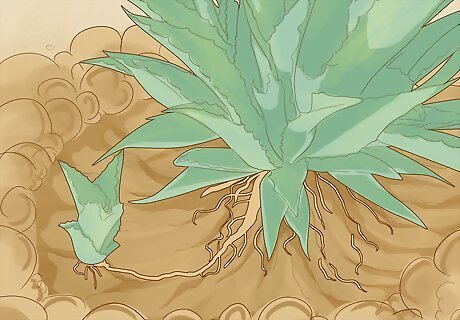
Dig around the base of the pup to expose its roots. If your agave is in a pot, carefully tease apart the root ball with your hands to separate the pup from the mother plant’s roots. If your agave is planted in the ground, use your hands, a small shovel, or a pickaxe to dig around the base of each pup. This helps expose the roots and loosen the pup from the mother plant. Pups are typically attached to the mother plant via 1 long, thick root. They also grow their own roots, which are usually short and thin. Agave plants are very hardy, so it’s okay if some roots get damaged. The mother plant and pups typically bounce back quickly.
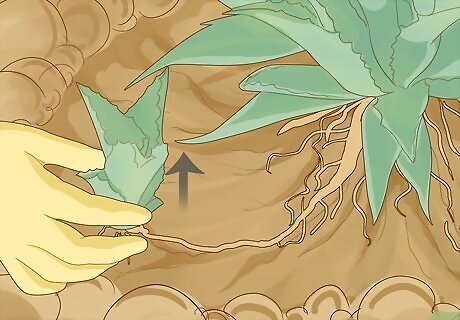
Grab the base of the pup and pull it away from the mother plant. Grip the pup below its leaves and above its roots. Simply pull it up to remove it from the mother. If your pups are in a pot, moving them side to side or twisting them as you pull can make removal easier. If the pup doesn’t pop out easily, look for the thick root connecting it to the mother plant. Then, slice about halfway along the root using a sharp, clean knife or shears. If you’re removing large pups in the ground, insert a shovel near the base of the pup. Push up on the shovel to lift up the pup. Then, grab it and pop it out of the ground. If you’re removing pups from the agave’s stem, simply grab the base of the pup and pull it off.
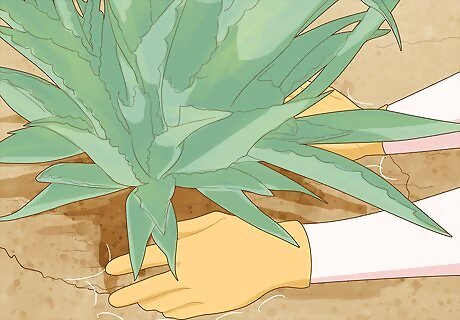
Repot the mother agave if you removed it from its pot. Set the agave in the center of the pot. Then, fill the pot with a cactus or succulent soil mix, making sure the roots are covered with soil. Lightly water the soil when you’re done repotting. If you removed pups from an agave plant in the ground, make sure the mother is stable and its roots are covered. Shovel dirt over any holes you dug. Cacti and succulent soil is well-draining and contains a high percentage of sand and gravel, which agave plants need.
Planting and Caring for Agave Pups
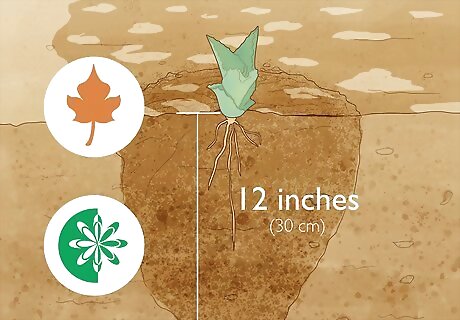
Plant the pups in a spot with well-draining soil and full sun. Find a place in your garden that stays pretty dry and doesn’t accumulate water, as agave doesn’t like to be wet. Just ensure the spot also gets at least 6 hours of direct sunlight. Then, dig a hole about the same depth as the roots and twice as wide, insert the pup, and water it. Fill the hole with the soil you dug up, or cactus or succulent soil. Do not plant the agave pup’s crown, or the very base of the plant’s stem, below the ground. Burying the crown can harm the agave. Agave grows best when planted in the early fall or spring. The pup’s roots usually establish in about 2 months. When you touch the plant, it will feel firmly attached to the ground.
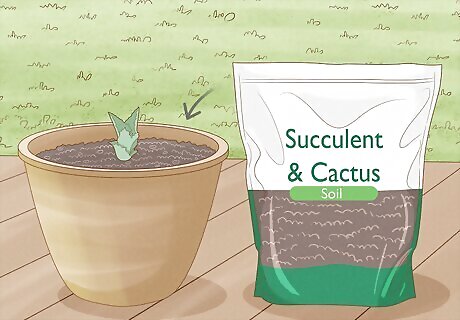
Fill a planter pot with cactus or succulent soil and add the pup. If you don’t have a spot outside to grow your agave pup, plant it in a pot. Choose a pot with drainage holes that’s about 1 to 2 inches (2.5-5 cm) taller and wider than the pup. Then, fill the pot about halfway with soil. Place the pup on top and cover the roots with soil. Water the pup after planting it to help it adjust to its new home. Make sure to only cover the agave pup’s roots with soil. Do not bury the plant’s crown, as this can hurt the pup.
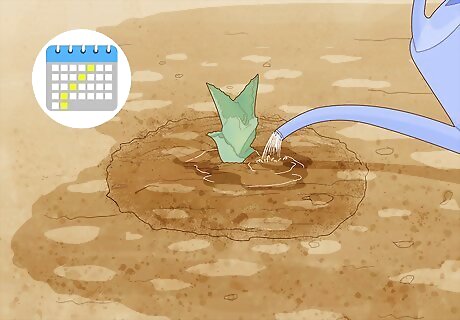
Water the agave pup’s soil every few weeks. Agave plants are drought-tolerant and don’t need a lot of water. How often you water your agave pup depends on the season, but generally, you only need to water it every 2 weeks. If the soil feels damp, don’t water your plant, as overwatering can kill it. In the spring and summer, water your agave every week. In the winter, water your agave about once per month. In the fall, water your agave about every 2 to 3 weeks.
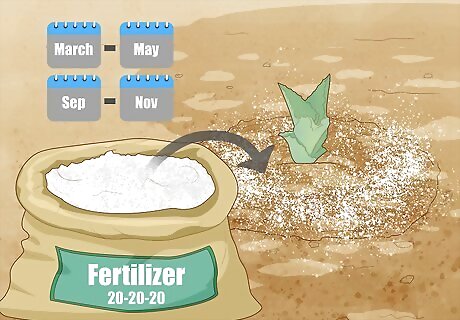
Fertilize the agave once or twice during the spring and fall. To help your agave plant grow stronger and faster, apply a balanced, liquid fertilizer that’s diluted to half of the recommended strength. Simply water your agave with the fertilizer and watch it grow. For instance, choose a fertilizer that’s 20% nitrogen, 20% phosphorus, and 20% potassium. Spring and fall are the growing seasons for agave, so this is when the fertilizer is most effective. Fertilize your plant between March and May and September and November. Note: Fertilizing your agave is optional. Agave does not require fertilizer to grow into a healthy, mature plant.

















Comments
0 comment